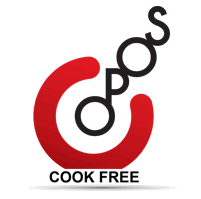Techniques – #F for Frying (Cold Pressure Frying)



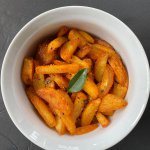
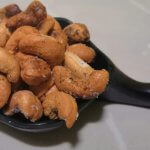
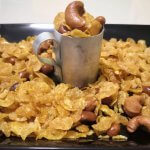
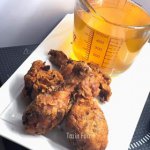
Why do we need a new technique? What’s wrong with age-old, tried and tested deep frying? Many things.
Deep frying happens at around 170 – 200°C. The higher the temperature, the greater the problems.
1. Free radicals start forming at higher temperatures
2. Acrylamide & PAH (Poly-cyclic Aromatic Hydrocarbons), suspected carcinogens, start forming at above 150°C.
3. Oil smoke is toxic. It is a major health risk.
4. Oil smoke messes up your kitchen, chimney, clothes, hair and wardrobe by depositing a sticky oily residue. The same thing happens internally, in the respiratory system, with prolonged exposure to oil fumes.
5. Oxidation is faster in open pot deep frying, promoting free radical production.
6. Most cold pressed oils are not suitable for deep frying as they break down at these high temperatures.
7. Oil absorption can be nearly 40%
We need to understand deep frying to fix its flaws.
The amount of oil absorbed by fried food is directly proportional to the moisture lost from food. When raw food is added to hot oil, lots of moisture is lost instantly and is replaced by oil. This is why traditional deep frying uses up more oil.
Most foods are mostly water. Potato, for instance, is 80% water. When it is dropped into hot oil, this water becomes steam. The pathways between cells once filled with water are now pressurised with steam (at around 6 PSI). As long as the heating continues, steam keeps getting built up and escapes. The density drops and they start to float. When they are taken out, and left to cool, the steam pressure drops. The pathways once filled with water and later with steam open up. Oil gets sucked in by capillary action (like what happens when you suck through a straw). More oil is absorbed during this cooling period than during the frying period. The density increases. Higher temperatures open up more pathways, leading to more oil absorption.
With repeated experiments, we found:
1. Moist foods absorb more oil than dry foods.
2. Porous foods absorb more oil than dense foods
3. Viscous oils get absorbed more than light oils
4. More the exposed surface area, more the oil absorption
5. Blanching reduces absorption (due to a combination of factors)
6. Coating the surface closes the pores and reduces oil absorption
So we tried frying food at lower temperatures than traditional frying methods. We theorised that low temperature frying can also reduce carcinogenic risks and oil breakdown.
As of now, the world has two technologies for low temperature frying.
1. Vacuum frying: Heat oil in a vacuum chamber to around 140 degrees. Add food.
2. Cold Frying: Immerse food in cold oil. Heat both together.
3. We are adding one more tool to this list with Cold Pressure Frying.
Cold Pressure Frying:
Immerse food in cold oil. Heat both together under pressure.
Cold pressure frying has elements of both vacuum frying and cold frying. We have seen that it reduces oil absorption. It creates a crunchy shell and a buttery soft interior not possible with traditional deep frying. We are yet to explore its full potential and limitations.
In Cold Pressure Frying experiments, we have seen:
1. Temperature when fully pressurized reaches 120-130°C
2. Temperature after most water has evaporated reaches 130- 150°C
3. Oil consumption is 20-50% less than deep frying.
The technique is in its infancy. With repeated trials, we are slowly polishing it up to a potent tool. Lessons 1 & 2 have been frozen, after nearly one year of testing. More lessons will be frozen after dozens of validations.
